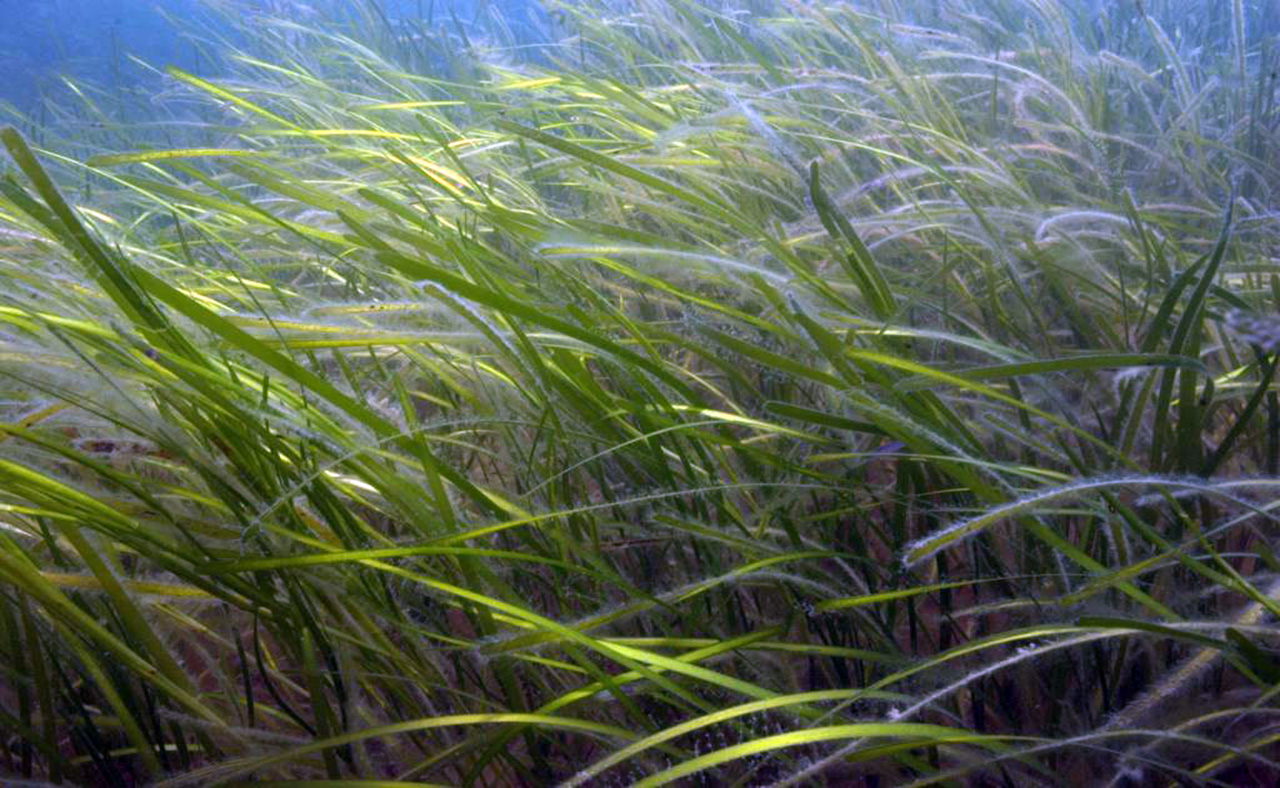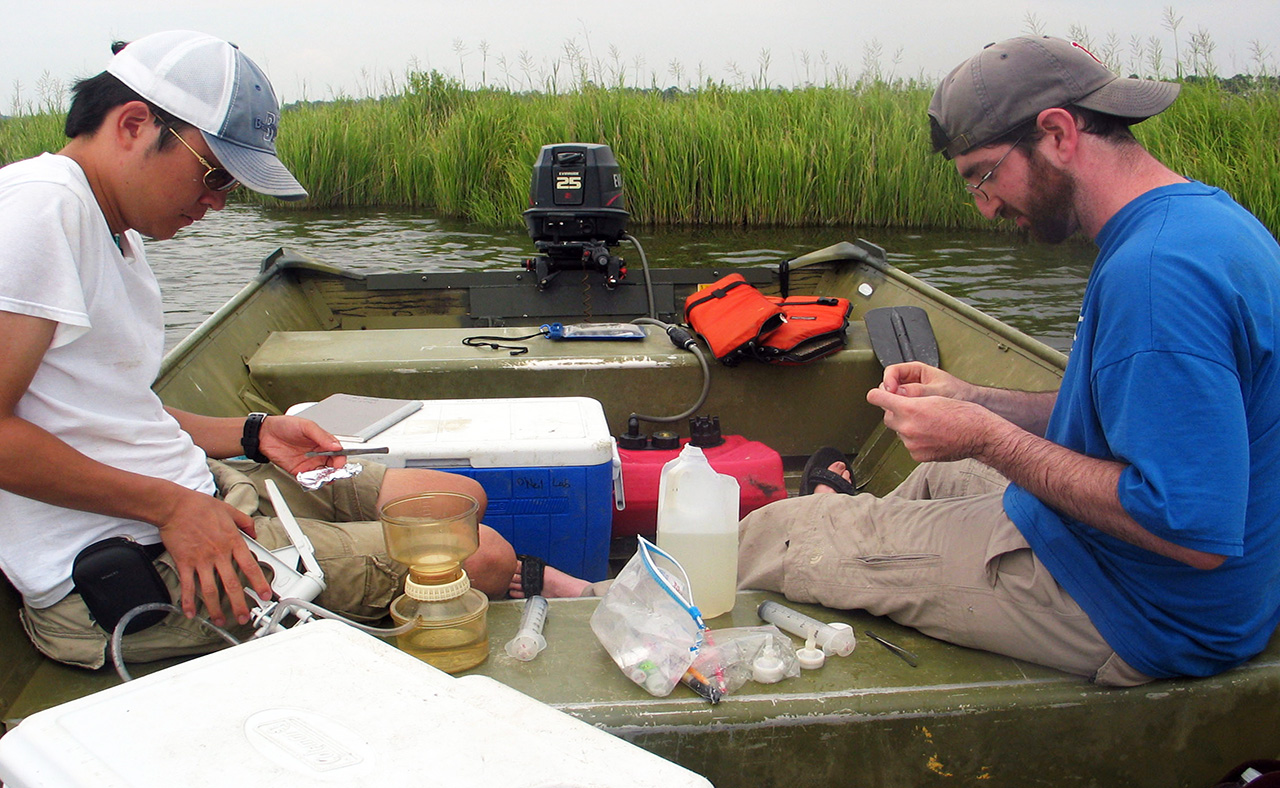Chlorophyll traps the sunlight which is required for making food in plants
Chlorophyll is the green pigment in tiny marine algae (phytoplankton) that produces food. Measuring chlorophyll in the Chesapeake Bay indicates the abundance of phytoplankton. In a balanced ecosystem, phytoplankton provide food for fish, crabs, oysters, and worms. When too many nutrients are available, phytoplankton may grow out of control and form algal blooms that can harm fish, shellfish, mammals, birds, and even people.

When the Bay is low in chlorophyll and clear of excess algae, seagrasses are able to thrive. Source: InlandBays.org.

Water samples are collected and filtered to measure for chlorophyll.

An explosion of phytoplankton led to this harmful algal bloom on the York River, a tributary of the Chesapeake Bay.
- 2013
- 2012
- 2011
- 2010
- 2009
- 2008
- 2007
- 2006
- 2005
- 2004
- 2003
- 2002
- 2001
- 2000
- 1999
- 1998
- 1997
- 1996
- 1995
- 1994
- 1993
- 1992
- 1991
- 1990
- 1989
- 1988
- 1987
- 1986
No story for this year